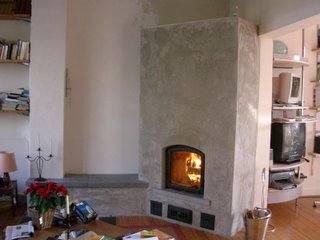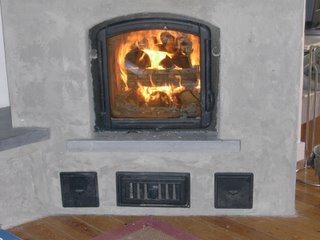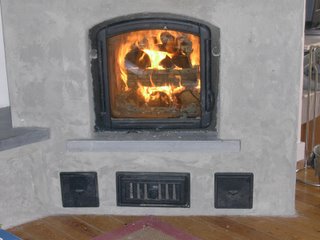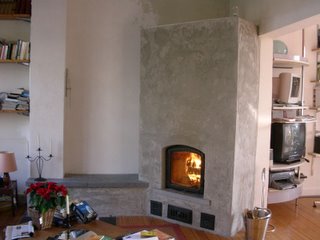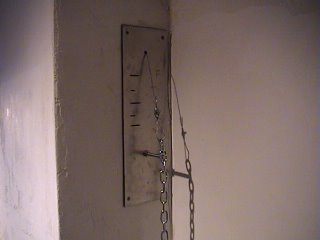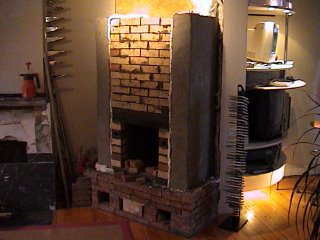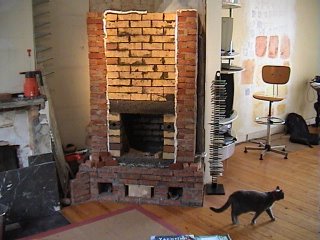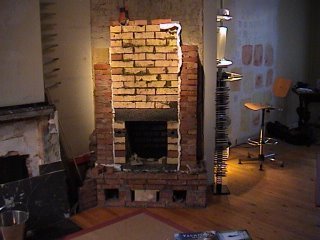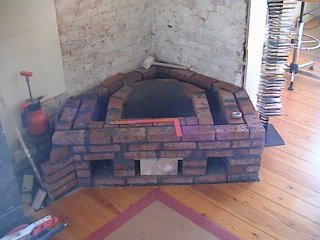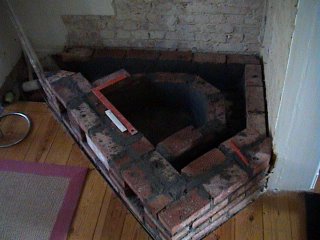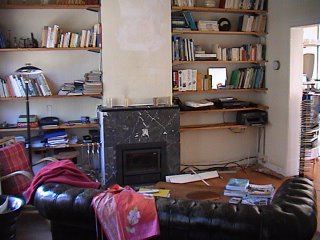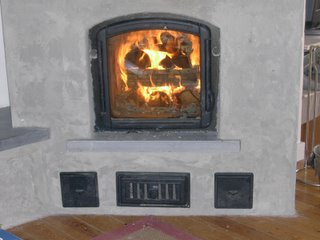
Let me tell you right away: i keep trying. You see the difficulty is to deal with what appears to be contradictory demands. One the one side you need a lot of air to reach high temperatures in the firebox ( to get a clean combustion ) and on the other side the less air comes through the firebox, the more heat is transferred to the walls. There it is: a balance between these 2 objectives.
The balance is difficult to obtain consistently because it varies according the dryness of the wood, type of wood, draft of the chimney.
First dryness: you should never burn wood with a humidity content of more than 25%, the ideal being between 20% and 15%. Get yourself a humidity tester, i have a testo 606
http://www.testo.com/. Even so i have noted that the slightest variation in humidity from one batch to the other impacts on air demand. One good advice, prepare your next firing as soon as possible. This will help the wood to get evenly dryer. Second, the denser the wood the harder it is to reach good internal temperatures. Therefore when using dense wood split it smaller than other woods. As a rule the denser your batch the more air you will need to get it going. Go ahead and open the ashdoor fully yes fully for a while. For light and drywood use less air especially if you have strong draft. I would leave the door ajar until you have real big flames all around yours logs. Then close the door with the vents open. When the flames start lowering, close your damper by half. When the flames start to change in pattern and they look more like lingering, close your damper further as well as all upper vents or injectors if applicable. Now your aim is to finnish your fire as soon as possible. Reduce the ashdoor air intake whenever possible but not so as to compromise the fire. Bear in mind that you want to terminate the fire as soon as possible and remember that it is at this stage that you are losing a lot of heat through the chimney. Finally at the ambers stage close the damper almost completely and close the ashdoor vents almost completely. If your firebox is real hot this stage should not last long. in my experience i get good results mixing hard and soft wood. That seems to give me the best of both worlds: good heat from soft wood helping the dense wood to release their gas, and good radiant heat from the embers of the hard wood. I told you it is a challenge
Comment faire le feu parfait? Sans ambages je vous le dis, je ne suis pas encore arrivé a faire le feu parfait. L'exercice n'est pas simple car il faut marier 2 demandes contradictoires. D'un côté il faut un maximum d'arrivée d'air pour atteindre des températures de combustion élevées et ainsi atteindre le nirvana de la non pollution et de l'autre moins il y a d'arrivée d'air frais moins il y a de refroidissement et plus la chaleur sera transmise. Cet équilibre est difficile à obtenir car les parametres changent tout le temps ( pression atmospherique, qualité du bois , sechage du bois, asemblage des buches, taille des buches etc.).
Le plus important est de travailler avec du bois sec 20% d'humidite +- 5%. J'ai un testeur d'humidite Testo 606 qui me rend bien des services.
Regle de base ne jamais faire du feu avec un bois qui n'est pas sec. Vous perdrez beaucoup en efficacite et la pollution augmentera de maniere efrrayante. Cela etant, j'ai constate des variations importantes des taux d'humidite a l'interieur d'un meme lot. Pour uniformiser l'ensemble, je charge mon foyer le plus tot possible. La chaleur residuelle sechera le bois et quand vou l'allumerez, il sera uniformement sec.
Deusio, un bois dense libere ses gaz plus difficilement et doit donc etre fendu plus petit. Mon experience c'est que plus le bois est dense et plus il faut d'air. N'ayez pas peur d'ouvrir la porte de la boite a cendres ( arrivee d'air principale en grand ). A l'inverse un bois tres sec et leger demande moins d'air surtout si vous avez un bon tirage. Pour du bois leger je laisse la porte des cendres entre-ouverte jusqu'a ce que les flammes soient au plus haut et au plus fort. Alors je ferme la porte en laissant les tirants ouverts. L'arrivee d'air en bas de porte est toujours fermee et celle du haut ouverte.
Quand les flammes commencent a baisser, fermez le clapet d'un bon tiers et quand elles sont franchement basses, fermez de 3/4.A present votre objectif est de terminer le feu le plus vite possible. Remuer les restants de buches une fois mais pas deux. Reduisez un peu les tirants d'air du bas (boite a cendres ) et completement ceux du haut mais pas au point d'handicaper le tirage. Ce stade difficile ne doit pas durer tres longtemps si vous aviez un foyer tres chaud.
J'aborderai la prochaine fois le role des injecteurs.
